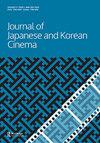The Living Sea: Okinawa, 1958 and the postwar media Dispositif
引用次数: 0
Abstract
ABSTRACT This essay focuses on Hani Susumu's The Living Sea (1958), a short film that depicts the story of a group of Okinawan boys who win a study trip to Tokyo as a prize. While the educational short is charged with an expansionist perspective that supposedly reinforces a hegemonic mainland imaginary of post-occupation Japan, the film rather points toward the heterogeneous topography of Okinawa and the process of its mediation. The essay examines The Living Sea from the perspectives of a genealogy of the so-called audio-visual education movement in Japan, the film's techno-infrastructural intersections with an emerging colour broadcasting system, and the development of postwar aquariums. This study also draws upon Hani's deep involvement with the so-called ‘montage debate’ in the late 1950s in an attempt to highlight the importance of film form and its political implications, in particular a set of distinctive representational syntaxes and shot compositions. The purpose of this essay is less about exploring problematic representations of Okinawa per se but rather about identifying the shifting positions of Okinawa and the geopolitical functioning of power by analysing the way in which cinema serves as a historically-marked media environment for the viewer's socio-technical life.生活的海洋:冲绳,1958年和战后的媒体处置
摘要:本文以进进哈尼的短片《活海》(1958)为中心,讲述了一群冲绳男孩赢得东京游学奖励的故事。虽然这部教育短片充满了扩张主义的视角,强化了被占领后日本的霸权大陆想象,但这部电影更倾向于指出冲绳的异质地形及其调解过程。本文从日本所谓的视听教育运动的谱系,电影与新兴彩色广播系统的技术基础设施的交叉,以及战后水族馆的发展的角度来审视《活海》。本研究还借鉴了哈尼在20世纪50年代后期对所谓的“蒙太奇辩论”的深入参与,试图强调电影形式及其政治含义的重要性,特别是一套独特的代表性语法和镜头构图。本文的目的不是探讨冲绳本身的问题表现,而是通过分析电影作为观众社会技术生活中具有历史标记的媒体环境的方式,来确定冲绳的地位变化和权力的地缘政治功能。
本文章由计算机程序翻译,如有差异,请以英文原文为准。
求助全文
约1分钟内获得全文
求助全文
来源期刊

Journal of Japanese and Korean Cinema
Arts and Humanities-Visual Arts and Performing Arts
CiteScore
0.60
自引率
0.00%
发文量
16
期刊介绍:
Journal of Japanese and Korean Cinema is a fully refereed forum for the dissemination of scholarly work devoted to the cinemas of Japan and Korea and the interactions and relations between them. The increasingly transnational status of Japanese and Korean cinema underlines the need to deepen our understanding of this ever more globalized film-making region. Journal of Japanese and Korean Cinema is a peer-reviewed journal. The peer review process is double blind. Detailed Instructions for Authors can be found here.
 求助内容:
求助内容: 应助结果提醒方式:
应助结果提醒方式:


